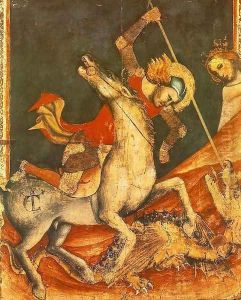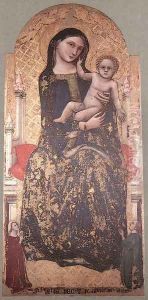Vitale d'Aimo de Cavalli Paintings
Vitale d'Aimo de Cavalli was an Italian painter from the 14th century, whose life details are not thoroughly documented. His exact birth year is not known, but he is remembered for his contributions to the Italian Gothic art movement of the time. He was active in the mid-14th century, a period that saw a flourishing of art and culture in Italy, known as the Trecento. This era was marked by significant developments in painting, sculpture, and architecture, with Italian artists beginning to move away from the Byzantine art style and incorporating more naturalism into their work.
Vitale's most notable work is the decoration of the St. Ranieri Chapel in the Campo Santo of Pisa, which he undertook in collaboration with a fellow artist, Simone Martini. The chapel's frescoes, which were completed around 1342, depict scenes from the life of St. Ranieri, the patron saint of Pisa. Vitale's contribution to these frescoes showcases the Gothic style of the time, characterized by elongated figures and an emphasis on line and ornamentation. Unfortunately, many of the frescoes were severely damaged during World War II and have undergone restoration.
Despite the scarcity of biographical details, it is believed that Vitale d'Aimo de Cavalli was held in high esteem during his lifetime. He was a contemporary of other notable Italian painters such as Giotto and Pietro Lorenzetti, who were also instrumental in the development of early Renaissance art. Vitale's work is significant in that it represents a transition from medieval artistic conventions towards a more nuanced and human-centered approach that would come to define the Renaissance.
Vitale d'Aimo de Cavalli passed away in 1360. Although only a few of his works survive to this day, they continue to be studied for their contributions to the evolution of Italian art. His legacy is one that is intertwined with the rich tapestry of the Italian Gothic style, bridging the gap between the Byzantine influence and the burgeoning Renaissance that would soon transform the European art scene.

